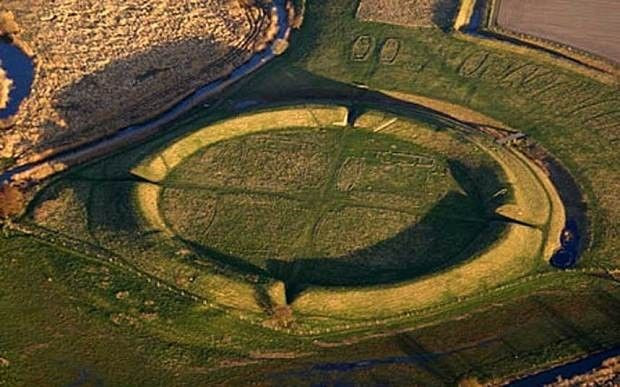Viking Ring Fortress Discovered in Denmark: The Fifth of its Kind
This Structure is Unique to the Viking Fortresses Discovered in Denmark

A large ring shaped Viking fortress was discovered in Denmark. This is a great discovery as it is only the fifth of its kind to be discovered. Archaeologists believed that it may have been a place used for training the Vikings ahead of a large invasion of England in 1013. The fortress was found on the Danish island of Zealand -- around 30 miles south of Copenhagen.
This discovery holds great significance as it would help gaining new perspective and it would help understand the Viking war and conflicts. Søren Sindbæk, professor of medieval archaeology at Aarhus University explained that the discovery of the fortress was a surprise because the Vikings were thought to berserkers and pirates, incapable of building something as magnificent as the fortress.
The fortress is perfectly circular in shape and has four gateways facing outwards in different compass directions, similar to the other four fortresses also discovered in Denmark. This structure is unique to the Viking fortresses discovered in Denmark and is unlike the others found in other countries. The newly discovered fortress has a diameter of 475 feet. It is the third-largest of its type and consists of a 35-foot wide circular rampart surrounded by a palisade of wooden spikes.
Dr. Sindbæk said that "considerable detective work," had gone into the discovery of the fortress as they had thought that a fortress was missing. He also stated that the site saw a lot of fighting and would have been an active military camp. He confirms her conclusion on the basis of the massive charred and burned down gates and oak posts that were found.
Describing the work that led to the discovery he said, "Helen Goodchild, an expert in archaeological geophysics from the University of York, measured small variations in the Earth's magnetism to find features without damaging the site." With this a "ghost image" of the fortress was formed and they knew where they had to excavate to find the most information on what he calls the "mysterious fortress." Its distinct design and the data from carbon dating revealed that it was a masterpiece of the Vikings.
Dr. Sindbæk said that the discovery may help understand the historic events that the fortress was part of. He is also eager to know if the fortress like the others discovered were from the time of King Harald Bluetooth or was built before his rule.
"As a military fortification from the Viking Age, the monument may help to unravel the position of New Zealand in relation to the oldest Danish kingdom," he said. Only small parts of the fortress were excavated. These fortresses are also known as Trelleborgs.
Dr. Sindbæk stated that the discovery would also help find, if there were other fortresses to discover. "The exploration will be a wonderful journey of discovery."





















